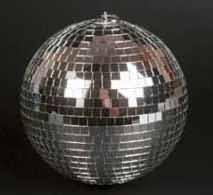
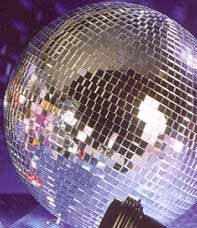
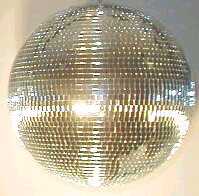



Adventure Thru Inner Space wasn't great on special effects, but some effects were nice, and all deserve mention.
Giant snowflakes. These appeared to be giant paper-m�ch� models, probably using a wooden frame as a base, covered with a glossy glaze that also appeared to have some type of glitter added to the glaze.
Large molecules. These were just models. The surface was opaque except for clear bands that looked as if they were bands of paint scratched off an otherwise transparent globe. Some simple rotating light mechanism inside would highlight the clear surface bands rapidly, to approximate the trajectory effect of a lighted object orbiting the sphere at high speed.
Projections. Notice on the map of this attraction that most of the chambers along the route appear rounded. That's because most of the walls were used as projector screens to give a continuous, real world effect of objects swirling about you. This gave the effect of being at the center of an atom, or of being amidst a flurry of snowflakes, or in a swirl of molecules.
The projections were done with multifaceted mirrored balls like those in dance halls. Today these are called "disco balls" or "mirror balls." Small ones can be purchased on the Internet for about $20. By shining a light beam onto disco balls, many fragments are reproduced in reflected form. One could sometimes see the mirrored balls on the floor of ATIS, below the elevated track, which was several feet off the floor. The balls slowly rotated as light was projected onto them.
If you watched the images on the walls carefully you could tell that the images were sometimes truncated. For example, the images of H2O molecules were sharply in focus, but sometimes had part of the image chopped off. Although I don't know for sure, most ATIS projections must have been done by shining a slide containing multiple tiny copies of the desired image (e.g., snowflake, molecule) onto a disco ball. Thus the projector could be adjusted to focus at any desired distance, and images didn't have to be placed on the ball itself. Some image truncation would occur at edges of the mirrors, but enough of the intact images would fall within the area of a single mirror to be convincing. To get the swirling effects of many small objects flowing in many directions at once, multiple balls were used with overlapping fields. This was a rather nice effect, especially considering the relatively low cost.
The nucleus. The nucleus was just a translucent globe towards the center of the room that briefly flashed red at random intervals. It was about 2-3 feet in diameter. The globe wasn't suspended: there was a horizontal rod that supported it from the wall behind the globe.
The rain lamp. At the very end of the ride just before disembarking into the display room to the sound of "Miracles From Molecules," guests passed by a giant structure of fibers on their left, dripping with fluid. This type of device is called a rain lamp.
Rain lamps were in vogue in the late '60s and early '70s, just like lava lamps. Outside of Disneyland, the first time I ever saw one was at a restauraunt in 1969 (Jamar's, in La Mesa, California). The most popular style was a lamp with a golden nude statue among green plastic shrubbery, with a criss-cross of slanted nylon fibers surrounding it. A pump in the bottom pumped mineral oil to the top of the lamp where it flowed through tiny holes, onto and down the lengths of the fibers in large, distinct, evenly spaced droplets, and ultimately collected underneath through holes at the bottoms of the fibers into a hidden collecting bowl. (I was once told the fluid was glycerine, but I never found any later evidence to support this claim.) An interior light shone down from the top.
The ATIS rain lamp was just a large version of this, running floor-to-ceiling, with slanting fibers, and colored lights shining onto the fibers, minus statue, shrubbery, and second crosshatching layer. In the early '70s, a vertical pole holding several Monsanto advertising signs that were angled in various directions was placed in the center of the lamp. An early 6-leaf ATIS booklet of illustrations shows a male and female mannequin inside. (I wonder how they changed the displays?)
Rain lamps are starting to make a comeback, just as lava lamps did. Original rain lamps from the '70s are commonly available on eBay for $15-100, depending on size, and are popular. The object chosen to be displayed inside ranged from Grecian style statues, to the Virgin Mary, to children in the rain, to clocks, to watermills. The fibers can be vertical or slanted, and can be found in one or two layers. The ATIS rain lamp fibers were slanted to the left, as in most rain lamps.
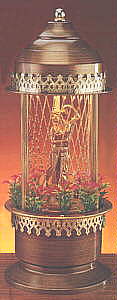
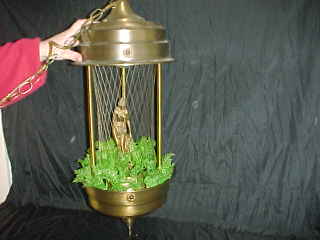
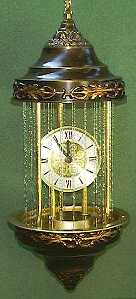
|
After the show opened, it seemed that Xavier Atencio would have to
redefine the meaning of human behavior. "We did Adventure Through Inner Space with a big plate-glass effect," Atencio said.
"The kids would go in there and spit on the glass.
We had also designed the sets to be close to the cars.
It gave more of a show to have these effects surrounding you up close.
But the kids reached out and literally tore the sets to pieces.
Anything they could touch, they grabbed. I guess
when they were isolated in groups of two, they were more prone to
misbehavior." Disneyland: Inside Story, Randy Bright, 1987, page 200 |
Yes, the behavior has melted. ATIS was a ride on which young male adolescents liked to shout, spit, and throw things. I never quite understood why this was. Was it because they weren't monitored to the extent as on other rides? Or was it the darkness? Or the lesser quality of the attraction? Or was it because anything free tends to attract riff-raff? Or was the attraction simply less interesting because it was scientific? Did the spiel have so many pauses that it encouraged talking? Or was the spiel too low in volume? Did ATIS just develop a reputation over time as a place where you could get away with such actions? The Haunted Mansion has the same kind of vehicles as ATIS did, yet I've seen none of the behavior there that I saw on ATIS.
One rowdy high school acquaintance once told me about how he and his friends thought it was funny to give the finger to the eye in the microscope as they went by it. When I told this story to another high school classmate, he said nonchalantly, "Oh yeah. We used to spit up there."
Only once did I see any kids warned about their actions on ATIS. Once, in one of the large rooms of ATIS, a flush, white-painted handleless door opened in the white wall and an ATIS employee came out to tell some kids not to be throwing things. I was surprised because I didn't see anybody throw anything, and I didn't know the walls had doors in them. Maybe there were hidden cameras, after all. (The employee looked funny with all the electrons flashing on him!) In contrast, several times I've seen employees come out of hidden doors in the Pirates of the Caribbean to tell people not to take flash pictures or to be standing up. Whatever the difference, that was one unique characteristic of ATIS that was unfortunate, but also kind of interesting.
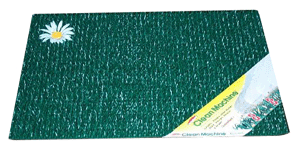
I find it utterly charming to know that exactly the same type and style of Monsanto AstroTurf doormat that was on display at ATIS is still on the market. This is the venerable Hunter Green AstroTurf Daisy doormat that was on the wall in Monsanto's display area at the end of the ride in 1975.
A modern advertisement for this reads:
|
The Original Clean Machine - Keeps your house clean!
Still the most popular, top-selling doormats for the price.
The original AstroTurf doormat offers durability and
cleaning effectiveness at a great price.
The daisy applique doormat is available in 3 colors -
Hunter Green, Lawn Green, and Cocoa.
Daisy |
Check out AstroTurf Door Mats for details.
There were at least two Adventure Thru Inner Space pins made as Disneyland mementos, but both are retired. Here is the most common pin:
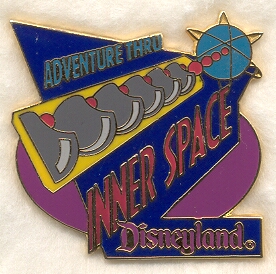
The rarer of the Adventure Thru Inner Space pins was a limited edition available only to cast members in a set with other pins. Ryan the Disney Guru tells me this pin was issued in a set of 15 in 1994 to commemorate Disneyland's extinct attractions, and it came in three separate acrylic boxes with a trading card for each attraction. The pin I bought came in a set of four in one acrylic box. The ATIS pin of this set looked like this:
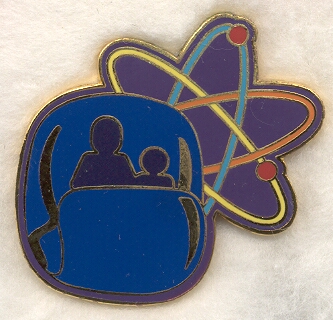
Monsanto put out a 7" record of the Adventure Thru Inner Space ride spiel and the song "Miracles From Molecules." This record is now rare, but is sometimes found for sale on eBay. The following scans of the front and back covers of the record were graciously supplied by Ryan the Disney Guru ([email protected]).
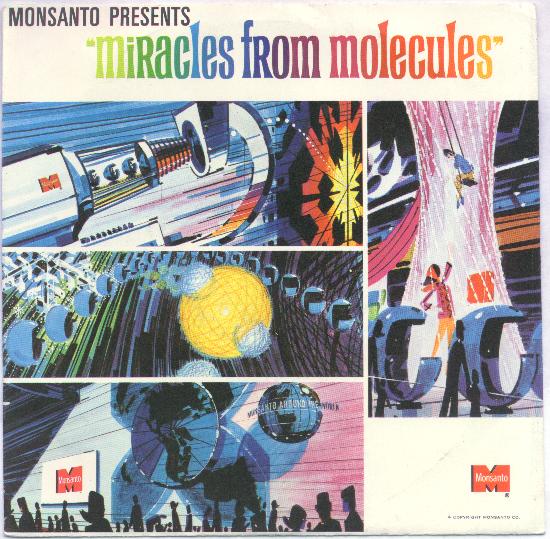
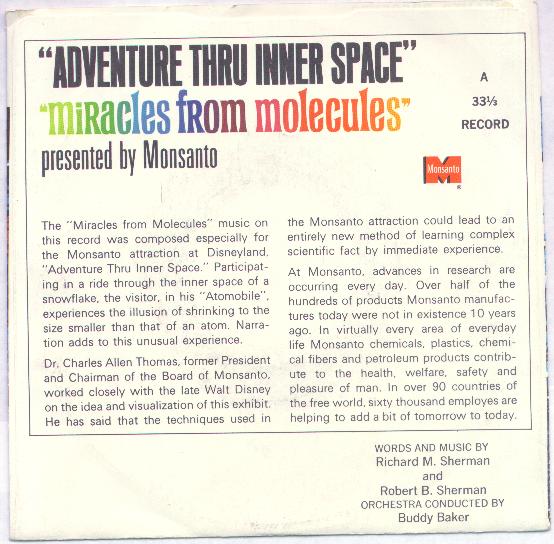
There were at least two different safety stickers used on the inside of the Atomobiles over the years. The two shown below were for sale on eBay in October 2001. The sticker with the Atomobile logo sold for about $100, the sticker without the Atomobile logo sold for about $15.

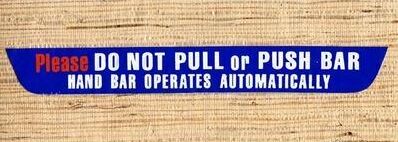



The picture of the rain lamp with the reddish background is from
HippyHeaven.net, which sells that and another model.
Updated: February 8, 2002